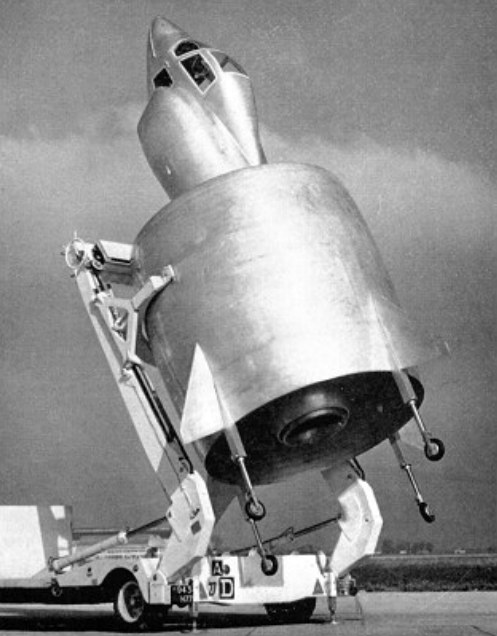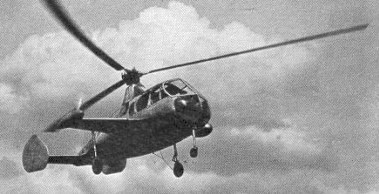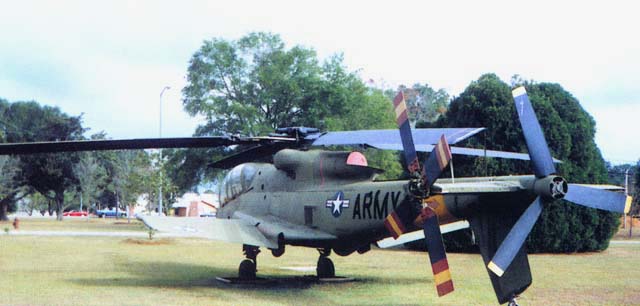|
Coleopter
A coleopter is a type of VTOL aircraft design that uses a ducted fan as the primary fuselage of the entire aircraft. Generally they appear to be a large barrel-like extension at the rear, with a small cockpit area suspended above it. Coleopters are generally designed as tail-sitters. The term is an anglicisation of the French '' coléoptère'' "beetle" after the first actual implementation of this design, the SNECMA Coléoptère of the mid-1950s. The first design of an aircraft clearly using the coleopter concept was developed during World War II. From 1944 on, the Luftwaffe was suffering from almost continual daytime attacks on its airfields and was finding it almost impossible to conduct large-scale operations. Their preferred solution was to introduce some sort of VTOL interceptor that could be launched from any open location, and there were many proposals for such a system. Heinkel conducted a series of design studies as part of their Heinkel Wespe and Heinkel Lerche program ... [...More Info...] [...Related Items...] OR: [Wikipedia] [Google] [Baidu] |
Tail-sitter
A tail-sitter, or tailsitter, is a type of VTOL aircraft that takes off and lands on its tail, then tilts horizontally for forward flight. Originating in the 1920s with the inventor Nikola Tesla, the first aircraft to adopt a tail-sitter configuration were developed by Nazi Germany during the Second World War. Development of such aircraft spiked during the late 1940s and 1950s, as aircraft designers and defence planners alike recognised the potential value of fixed-wing aircraft that could perform both a vertical take-off and vertical landing while also transitioning into and out of conventional flight. Inherent problems with tail-sitter aircraft were poor pilot visibility and control difficulties, especially during vertical descent and landing. Programmes to develop manned tail-sitters were typically terminated in the form of the more practical thrust vectoring approach, as used by aircraft such as the Hawker Siddeley Harrier and Yakovlev Yak-38. Description A tail-sitter sits ... [...More Info...] [...Related Items...] OR: [Wikipedia] [Google] [Baidu] |
SNECMA Atar Volant
The SNECMA Atar Volant or C.400 P1 was a French turbojet engine produced by SNECMA as part of their "Atar" series. Encased in a basic fairing which could hold fuel and remote-control equipment, the unit weighed 5,600 pounds (2550 kg) and generated a thrust of approximately 6,200 pounds-force (27.6 kN); the Atar Volant was able to cause vertical lift, which was precisely its purpose. There were later Atar Volant models, each made improvements and alterations to the previous designs, and eventually resulted in a full-fledged craft. Background and purpose The Coléoptère was a VTOL or "Vertical Take-Off and Landing" aircraft that was designed by SNECMA during the 1950s. While the Coléoptère was not the first VTOL aircraft, none of its predecessors had an annular wing designed to land vertically. The benefit of this annular wing was the requirement for very little landing or take-off space. However, the design of the Coléoptère met with many problems, such as ove ... [...More Info...] [...Related Items...] OR: [Wikipedia] [Google] [Baidu] |
Aircraft Configurations
An aircraft is a vehicle that is able to fly by gaining support from the air. It counters the force of gravity by using either static lift or by using the dynamic lift of an airfoil, or in a few cases the downward thrust from jet engines. Common examples of aircraft include airplanes, helicopters, airships (including blimps), gliders, paramotors, and hot air balloons. The human activity that surrounds aircraft is called ''aviation''. The science of aviation, including designing and building aircraft, is called ''aeronautics.'' Crewed aircraft are flown by an onboard pilot, but unmanned aerial vehicles may be remotely controlled or self-controlled by onboard computers. Aircraft may be classified by different criteria, such as lift type, aircraft propulsion, usage and others. History Flying model craft and stories of manned flight go back many centuries; however, the first manned ascent — and safe descent — in modern times took place by larger hot-air ... [...More Info...] [...Related Items...] OR: [Wikipedia] [Google] [Baidu] |
Convair
Convair, previously Consolidated Vultee, was an American aircraft manufacturing company that later expanded into rockets and spacecraft. The company was formed in 1943 by the merger of Consolidated Aircraft and Vultee Aircraft. In 1953, it was purchased by General Dynamics, and operated as their Convair Division for most of its corporate history. Convair is best known for its military aircraft; it produced aircraft such as the Convair B-36 Peacemaker and Convair B-58 Hustler strategic bombers, and the Convair F-102 Delta Dagger and Convair F-106 Delta Dart interceptors. It also manufactured the first Atlas rockets, including the rockets that were used for the crewed orbital flights of Project Mercury. The company's subsequent Atlas-Centaur design continued this success and derivatives of the design remain in use as of 2020. The company also entered the jet airliner business with its Convair 880 and Convair 990 designs. These were smaller than contemporary aircraft like ... [...More Info...] [...Related Items...] OR: [Wikipedia] [Google] [Baidu] |
SNECMA Coléoptère
The SNECMA C.450 Coléoptère (meaning "beetle" in French, descended from Greek for "sheathed wing") was a vertical take-off and landing (VTOL) aircraft that was designed by the French company SNECMA and manufactured by Nord Aviation. While work on the aircraft proceeded to the test flying phase, the project never progressed beyond experimental purposes. The Coléoptère was one of multiple efforts to produce a viable VTOL aircraft being conducted around the world throughout the 1950s. SNECMA had previously experimented with several wingless test rigs, known as the Atar Volant, which influenced the design. In terms of its general configuration, the Coléoptère was a single-person aircraft with an unusual annular wing; the aircraft was designed to take-off and land vertically, therefore requiring no runway and very little space. Performing its maiden flight during December 1958, the sole prototype was destroyed on its ninth flight on 25 July 1959. While there were intentions at ... [...More Info...] [...Related Items...] OR: [Wikipedia] [Google] [Baidu] |
Hiller VXT-8
__NOTOC__ The Hiller VXT-8 Coleopter was a proposed annular wing VTOL aircraft designed in the United States in the late 1950s, inspired by the French SNECMA Coléoptère The SNECMA C.450 Coléoptère (meaning "beetle" in French, descended from Greek for "sheathed wing") was a vertical take-off and landing (VTOL) aircraft that was designed by the French company SNECMA and manufactured by Nord Aviation. While work .... The project did not progress beyond the mockup stage. External links Smithsonian Air and Space Museum site about the involvement of Stanley Hiller in the development of the Coleopter Annular-wing aircraft VXT-8 1950s United States experimental aircraft Tailsitter aircraft {{aero-1950s-stub ... [...More Info...] [...Related Items...] OR: [Wikipedia] [Google] [Baidu] |
Heinkel Lerche
The Heinkel Lerche ( en, Lark) was the name of a set of project studies made by German aircraft designer Heinkel in 1944 and 1945 for a revolutionary VTOL fighter and ground-attack aircraft. The ''Lerche'' was an early coleopter design. It would take off and land sitting on its tail, flying horizontally like a conventional aircraft. The pilot would lie prone in the nose. Most remarkably, it would be powered by two contra-rotating propellers which were contained in a doughnut-shaped, nine-sided annular wing. The remarkably futuristic design was developed starting 1944 and concluding in March 1945. The aerodynamic principles of an annular wing were basically sound, but the proposal was faced with a whole host of unsolved manufacture and control problems which would have made the project highly impractical, even without the material shortages of late-war Nazi Germany Nazi Germany (lit. "National Socialist State"), ' (lit. "Nazi State") for short; also ' (lit. "National S ... [...More Info...] [...Related Items...] OR: [Wikipedia] [Google] [Baidu] |
SNECMA Coléoptère On Ramp 1959
Safran Aircraft Engines, previously Snecma (''Société nationale d'études et de construction de moteurs d'aviation'') or Snecma Moteurs, is a French aerospace engine manufacturer headquartered in Courcouronnes and a subsidiary of Safran. It designs, manufactures and maintains engines for commercial and military aircraft as well as rocket engines for launch vehicles and satellites. Some of its notable developments, alone or in partnership, include the Dassault Rafale's M88 engine, the Concorde's Olympus 593, the CFM56/ CFM-LEAP for single-aisle airliners, and the Ariane 5's Vulcain engine. The company employs around 15,700 people across 35 production sites, offices, and MRO facilities worldwide and files an average of nearly 500 patents each year. Safran Aircraft Engines also notably operates two joint ventures with GE Aviation: CFM International, the world’s leading supplier of commercial aircraft engines, and CFM Materials. Timeline * 1945: Snecma was formed when the ... [...More Info...] [...Related Items...] OR: [Wikipedia] [Google] [Baidu] |
Focke-Wulf Triebflügel
The Focke-Wulf ''Triebflügel'', or ''Triebflügeljäger'', literally meaning "thrust-wing hunter", was a German concept for an aircraft designed in 1944, during the final phase of World War II as a defence against the ever-increasing Allied bombing raids on central Germany. It was a vertical take-off and landing tailsitter interceptor design for local defense of important factories or areas which had small or no airfields. The ''Triebflügel'' had only reached wind-tunnel testing when the Allied forces reached the production facilities. No complete prototype was ever built. Design The design was particularly unusual. It had no wings, and all lift and thrust were provided by a rotor/propeller assembly 1/3 of the way down the side of the craft (roughly halfway between the cockpit and tailplane). When the plane was sitting on its tail in the vertical position, the rotors would have functioned similarly to a helicopter. When flying horizontally, they would function more like a g ... [...More Info...] [...Related Items...] OR: [Wikipedia] [Google] [Baidu] |
Sikorsky S-67 Blackhawk
The Sikorsky S-67 Blackhawk was a private-venture, prototype attack helicopter built in 1970 with Sikorsky Aircraft research and development (R&D) funds. A tandem, two-seat aircraft designed around the dynamic drive and rotor systems of the Sikorsky S-61, it was designed to serve as an attack helicopter or to transport up to eight troops into combat. Design and development AAFSS and S-66 bid The United States Army issued a request for proposals (RFP) for its Advanced Aerial Fire Support System (AAFSS) program on 1 August 1964.Office of the Assistant Vice Chief of Staff of the Army (OAVCSA)''An Abridged History of the Army Attack Helicopter Program'' pp. 4–5, 9. Washington, DC: Department of the Army. 1973. Lockheed offered its CL-840 design, a rigid-rotor compound helicopter.Landis and Jenkins 2000, pp. 25, 85–87. Sikorsky submitted the S-66, which featured a "Rotorprop" serving as a tail rotor but as speeds increased would rotate 90° to act as pusher prop.Apostolo 1984, ... [...More Info...] [...Related Items...] OR: [Wikipedia] [Google] [Baidu] |
Gyrodyne
A gyrodyne is a type of VTOL aircraft with a helicopter rotor-like system that is driven by its engine for takeoff and landing only, and includes one or more conventional propeller (aircraft), propeller or jet engines to provide forward thrust during Cruise (aeronautics), cruising flight. During forward flight the rotor is unpowered and free-spinning, like an autogyro (but unlike a compound helicopter), and Lift (force), lift is provided by a combination of the rotor and conventional wings. The gyrodyne is one of a number of similar concepts which attempt to combine helicopter-like low-speed performance with conventional fixed-wing high-speeds, including tiltrotors and tiltwings. In response to a Royal Navy request for a helicopter, Dr. James Allan Jamieson Bennett designed the gyrodyne whilst serving as the chief engineer of the Cierva Autogiro Company. The gyrodyne was envisioned as an intermediate type of rotorcraft, its rotor operating parallel to the flightpath to minimize a ... [...More Info...] [...Related Items...] OR: [Wikipedia] [Google] [Baidu] |
Lockheed AH-56 Cheyenne
The Lockheed AH-56 Cheyenne was an attack helicopter developed by Lockheed for the United States Army. It rose from the Army's Advanced Aerial Fire Support System (AAFSS) program to field the service's first dedicated attack helicopter. Lockheed designed the Cheyenne using a four-blade rigid-rotor system and configured the aircraft as a compound helicopter with low-mounted wings and a tail-mounted thrusting propeller driven by a General Electric T64 turboshaft engine. The Cheyenne was to have a high-speed dash capability to provide armed escort for the Army's transport helicopters, such as the Bell UH-1 Iroquois. In 1966, the Army awarded Lockheed a contract for ten AH-56 prototypes, but as a stopgap also ordered the less complex Bell AH-1G Cobra as an interim attack aircraft for combat in Vietnam War. The AH-56's maiden flight took place on 21 September 1967. In January 1968, the Army awarded Lockheed a production contract, based on flight testing progress. A fatal crash a ... [...More Info...] [...Related Items...] OR: [Wikipedia] [Google] [Baidu] |






